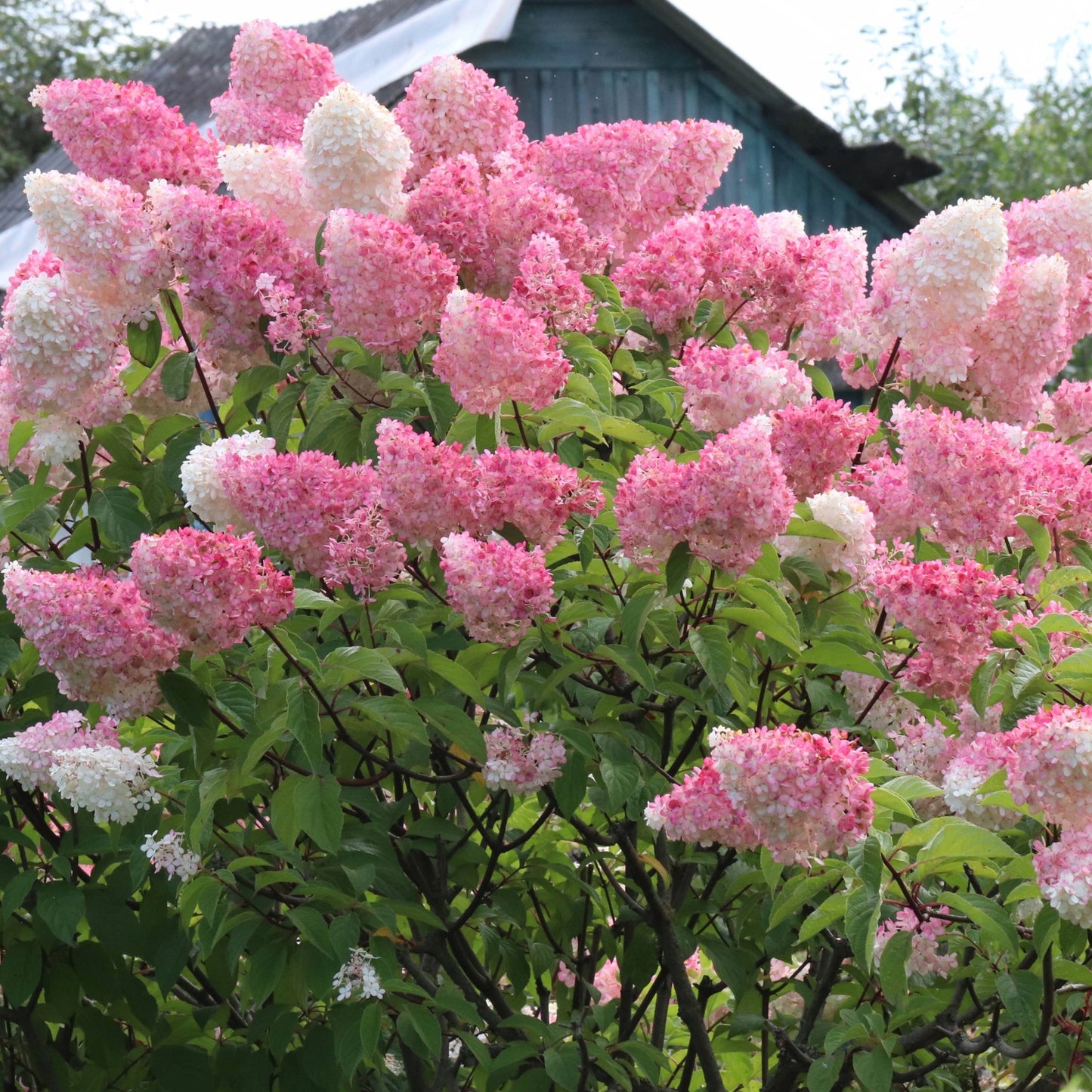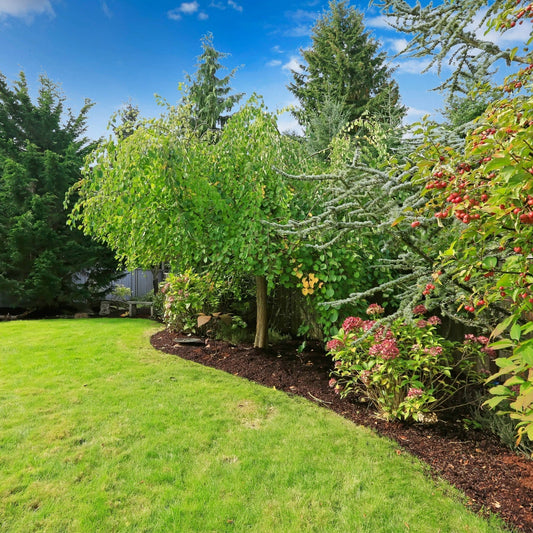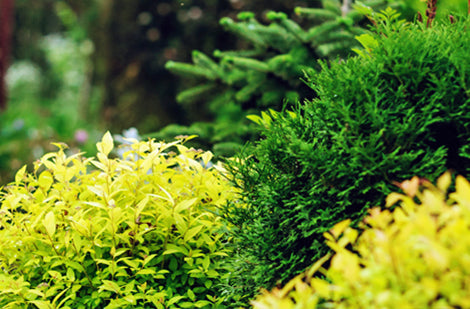Hydrangea paniculata 'Fraise Melba®' ('Renba')
Hydrangea paniculata FRAISE MELBA® 'Renba' – 'Fraise Melba' Panicle Hydrangea
Hydrangea paniculata FRAISE MELBA® 'Renba' – 'Fraise Melba' Panicle Hydrangea
Exposure
- Sun
- Partial sun
- Partial shade
Rusticity
Bloom time
- July
- August
- September
- October
- Sturdy stems, no flopping
- Flowers change colour
- White, pink, red panicles
- Purple fall foliage
- Improvement on 'Vanille Fraise'
The 'Fraise Melba' hydrangea represents a spectacular improvement on the famous 'Vanille Fraise' variety. This shrub stands out for its exceptionally sturdy stems that effortlessly support its enormous flowers, even after a summer rain. It offers a fascinating, evolving colour show, making it a striking focal point for any garden seeking long-lasting summer and fall blooms.
Characteristics
- Foliage: The plant develops beautiful deciduous foliage that is dark green and heavily veined. In the fall, the leaves take on a magnificent purple hue that extends the season of interest.
- Flowering: Starting in late July, it produces impressive panicles of dense, conical flowers measuring 20 to 25 cm. The flowers emerge an ivory white, progressively tinge with pink, then turn a deep raspberry red as the nights grow cooler, creating a superb bicolour effect during the transition.
- Light: It thrives in full sun, which intensifies the colour of its flowers, but it also adapts very well to partial shade.
- Habit: It forms a shrub with a bushy, upright, and well-branched habit.
- Growth: Fast. It reaches a height of about 2 m with a spread of 1.5 m.
- Moisture: It prefers soil that remains cool and moist.
- Soil: It grows well in rich, moist, and well-drained soil. It demonstrates better tolerance for slightly calcareous soils than traditional macrophylla hydrangeas.
- Hardiness: Very hardy, it faces Zone 4 winters (down to -29°C) without any problem.
- Watering: It requires regular watering to keep the soil moist, especially during dry periods.
- Resistance: Its sturdy stems are its greatest strength, as they do not flop under the weight of water-soaked flowers.
Uses
- Types of Use: Its size and presence make it an excellent choice as a standalone specimen. It also integrates magnificently into large shrub borders or at the back of a flower bed.
- Ornamental Features: The main attraction lies in its flowers that evolve from white to red, offering a changing colour show over several months. Its cut flowers make superb bouquets, both fresh and dried.
Care
- Fertilizing: Apply a fertilizer for flowering shrubs in early spring to support its vigorous growth and abundant flowering.
- Pruning: Pruning is not essential for its survival. However, to encourage even stronger stems and larger flowers, prune the shrub by about one-third in early spring, before new leaves appear.
- Planting: The best time to plant it is in the spring or fall, in rich, well-drained soil.
Plant details
Dimensions
Dimensions
Characteristics
Characteristics
Habit:
- Bushy
Flowering colours:
- Red
- White
- Pink
Plant needs
Plant needs
Watering:
- Water regularly to keep the soil moist but not soggy.
Maintenance:
- Easy
Soil requirement:
- Rich
- Fresh
- Well-drained soil
Features
Features
Resistance:
- Diseases
Attract:
- Pollinators
- Butterflies
Use:
- Mass Planting
- Beds
- Flowerbeds
- Container
- Cut flowers
- Fall Colouration
Attribute:
- Long flowering



Related articles
-

Trees and shrubs for small space landscaping
Read the articleHaving an exceptional garden is possible, even in the city! Discover our selection of trees and shrubs perfect for small lots, and transform your outdoor space into a green oasis.
-

When and how to plant shrubs: successful planti...
Read the articleDiscover our complete guide to mastering shrub planting and care. Learn the best planting times, essential techniques, along with tips for watering, fertilizing, and managing common issues. Our practical advice...
-

Choosing shrubs to plant
Read the articleIn exterior design, shrubs represent furniture. They set the scene and set the tone for the flower bed. Shrubs constitute the living architectural elements of the landscaped garden. As proof,...
-

Shrubs: beautiful all year long
Read the articleLe grand choix d’espèces fournit l’occasion de varier les formes, les feuillages, et de créer des floraisons successives, bref, de composer un jardin magnifique à longueur d’année. Pour toutes ces...











